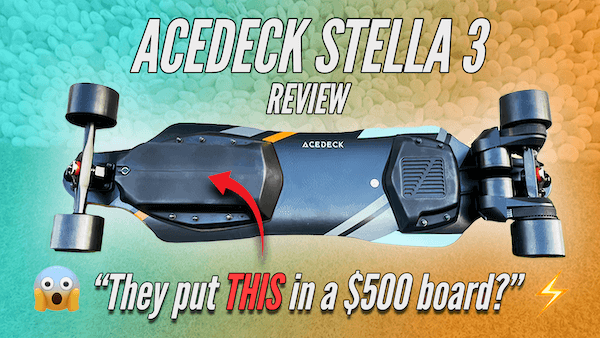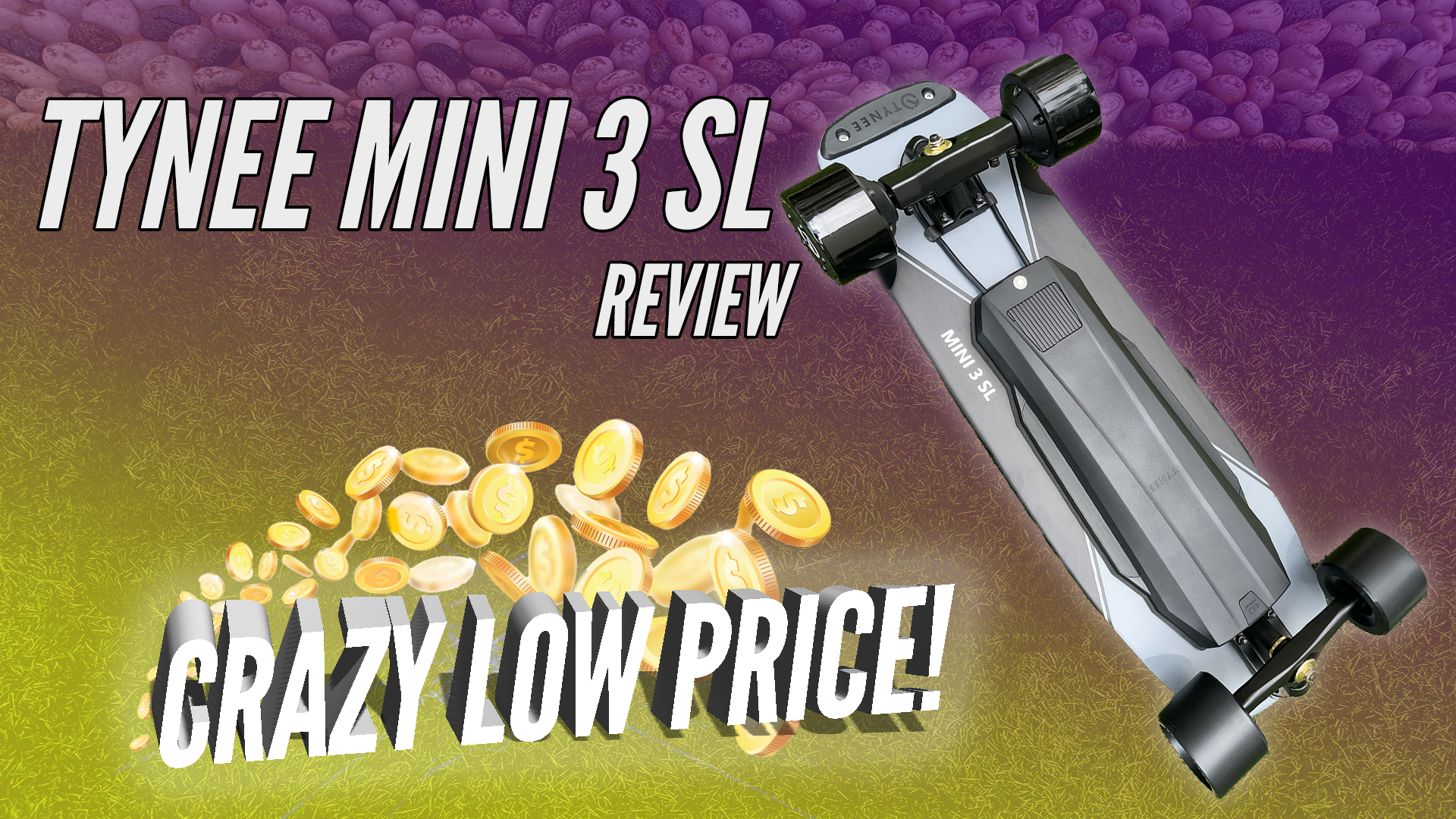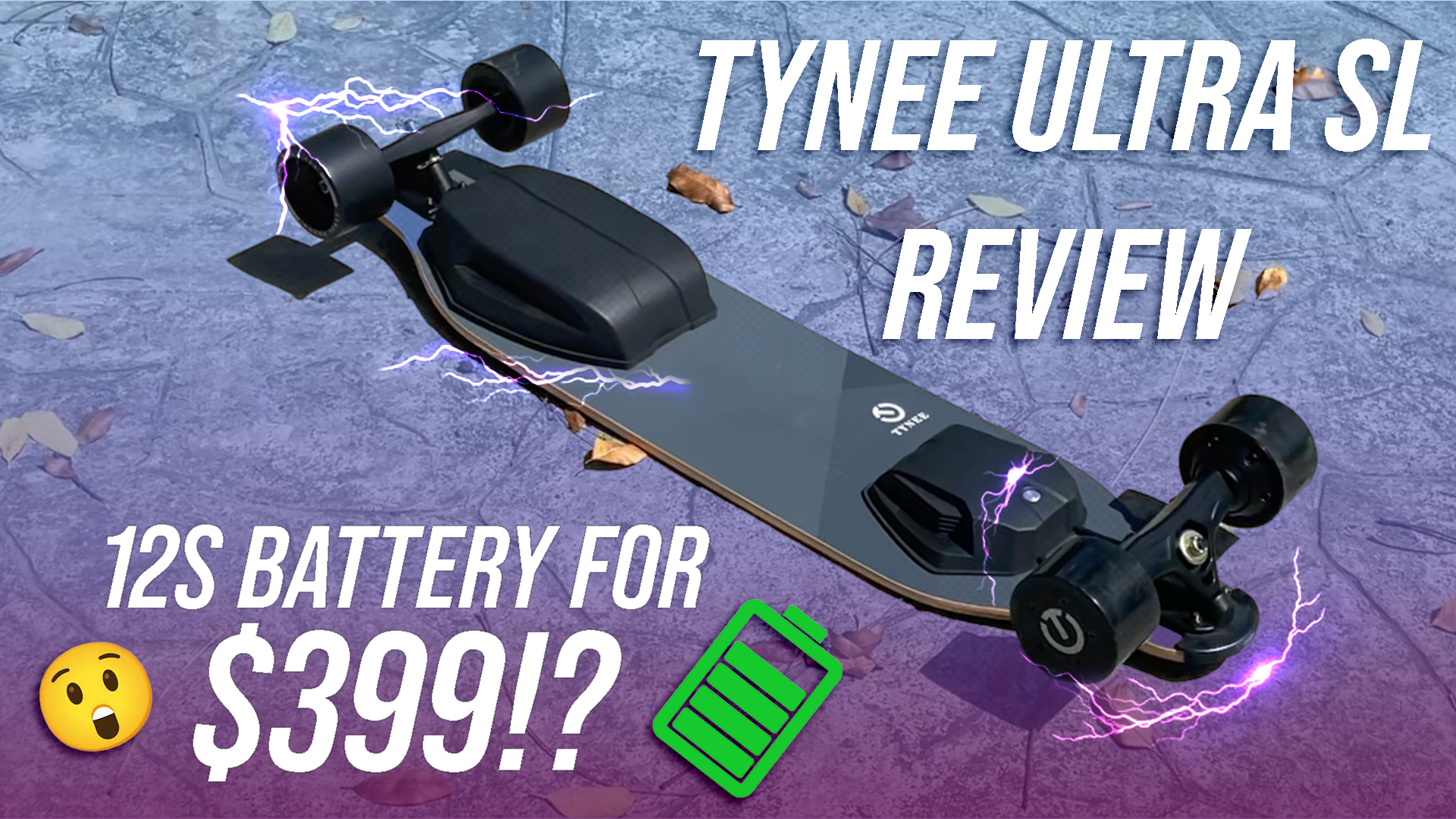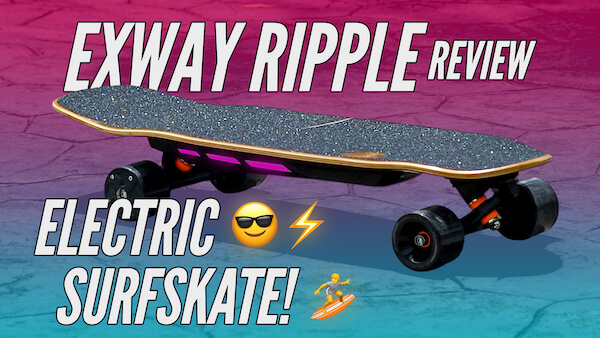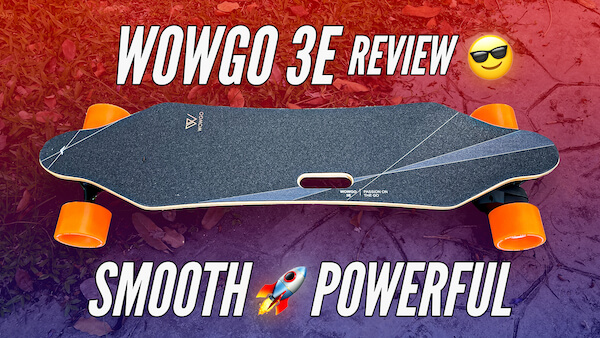Acedeck Stella S3 is one of those rare belt-driven longboards that’s priced under $500.
Before the Stella S3, the only other belt drive under $500 was the $449 Wowgo 3E, which we considered the best entry-level electric skateboard, and now we are looking to see if this Acedeck Stella S3 is going to take its throne. And judging by the specs, it just might, as Acedeck really put some crazy stuff in it.
Acedeck Stella S3 Specs:


| Price | $499 |
| Battery | 13s2p 374Wh Samsung 40T battery |
| Controller | Acedeck Customized ESC |
| Top Speed | 28 Mph / 45 Kph |
| Range | 22 Miles / 35 Km |
| Deck | Bamboo and Maple Composite |
| Motor | Dual 1500W 6355 Belt drive Motors |
| Net Weight | 9.5kg / 20.1lbs |
Deck – Canadian Maple And Bamboo Composite:



Starting with the deck, the Acedeck Stella S3 is made of a Canadian Maple and bamboo composite deck with a mild flex and an aggressive concave, which is ideal for foot placement. It has a simple and clean design, going with the grey color scheme that’s universal to most Acedeck lineups.
ESC – Similar to Hobbywing ESC:


Moving onto the ESC, Acedeck used their own customized ESC, but it felt really similar to the tried and true Hobbywing ESC. This comes with four-speed settings. For those who are not familiar with Hobbywing ESC, it is the most popular electronic speed controller that’s proven to deliver perfectly smooth and intuitive speed control. It also has a smart turn-on feature, meaning the board powers on automatically when its standard Hobywing remote is turned on.
Battery – 13s2p 374Wh Samsung 40T battery:


And now for the biggest surprise: the battery. It’s a 13s2p battery. A 13-s battery is above average for a $500 board and would provide the board with a lot of power. But going with 21700 cells with Samsung 40T, too? We were super surprised, and we don’t remember any other $500 having a battery setup as good as this.
This battery pack is marketed to have a range of up to 22 miles (35 km), and in our tests, we managed to reach 17.4 miles (28km) with a 150 lbs (70kg) rider riding fast, which is astonishingly higher than the 10miles or 18km we anticipated from a sub- $500 belt-driven eskate.
Motor – Dual 1500W 6355 Belt drive Motors:



Another big surprise with the Stella S3 is its big motors. These are 6355 motors with a 1500W rating each. And although motor wattage is never the full story, it still means something. The gear ratio is also quite high at 1:2.7, so it is more to a recipe that prioritizes torque over top speed. That being said, these motors are still marketed with a healthy top speed of 28 mph or 45 kph, which is pretty standard for boards at this price, and we managed to come in just under 28mph at 27.3mph or 44 kph.
Trucks and Wheels – 45-degree Reverse Kingpin trucks:



As for the trucks, Acedeck uses a standard casted 45-degree reverse Kingpin truck with double barrel bushings of 100A and 96A, which looks like a combination built with stability in mind.
As for the wheels, these are pretty standard 90mm wheels rated 76A.
The board weighs about 20 lbs or 9.5kg.
Specs Summary of the Acedeck Stella S3:



As you can see, with this 13s2p Samsung 40T battery and these motors, Stella S3 has to completely flop in the riding experience department to not be one of the best, if not the best eskate under $500. So, let’s hit the road and see how the board rides.
Riding Experience of the Acedeck Stella S3:


The Acedeck Stella S3 feels a lot like a Wowgo 3E with a 10% tilt towards stability and a lot more torque.
And that amazing torque is definitely the highlight of the Stella S3. Since then, a lot of brands have come to the realization that torque—rather than power or top speed—is what really the fun factor for a board. Tynee with its Tynee Mini 3 Pro and Meepo with its Vader and Voyager are all boards that went torque over power, and they are pretty popular for that.
The Stella S3 is one of those boards that rocket off from a standstill at the push of the throttle, you can definitely feel the 13s battery in action. And it wields that torque well, which is not a surprise as it is Hobbywing ESC, after all. Acceleration is strong but smooth, speed controls are intuitive. What’s notable is that braking is equally strong, something that not all boards with Hobbywing ESC are capable of. You can brake to a halt pretty quickly with this board.


The skate parts come together to support the aggressiveness of the board, too. First, the deck is on the stiffer side, and the pronounced concave helps keep our feet snug and secure.
Next, the trucks are more stable than responsive, too. Sadly, the tradeoff here is that the Stella S3 is less responsive and less fun for carving in comparison to the Wowgo 3E with its flexible deck and responsive trucks. But I digress, these trucks add another layer to the stability.
You know the board is stable when it feels slow to be riding at 28mph or 44kph. And on top of that, you don’t notice the board got to top speed as it felt effortless both on your part and the board’s part.
The very significant road vibration of the board is one obvious flaw, especially when compared to other belt drives with larger wheels or a more flexible deck. Having said that, it is still, without a doubt, far more comfortable than any hub-driven board on difficult terrain. If riding on rough roads is what you do often, consider swapping to bigger wheels, there are tons of good 105 and 120mm in the market right now.
Verdict of Acedeck Stella S3:



We are accustomed to seeing no-name brands attempt to break into the market by making a board with over-the-top specs for its price. Those boards usually have weaker build quality, and most of those brands didn’t last long enough to support their customers.
However, I believe Acedeck has moved past that point as it established itself with the Nyx lineup, stayed in business long enough to demonstrate that they care about their customers, and built their boards really well. For that reason, I find it funny that they are still aggressively undercutting their rivals on price.
This is how we see Acedeck Stella S3 for $500.
S Tier torque, S Tier battery, A tier stability, B+ in responsiveness, and A in power and build quality.
If the Stella S3 were priced at $650, it would likely still be the best-value purchase. As such, if you’re looking for an electric skateboard that falls into the entry to mid-tier, there’s not much reason to get anything else. It really is the best electric skateboard we have ever reviewed for under $500.
If you are interested in buying the Acedeck, be sure to check out our affiliate discount link here and use code: “ESKATEHQ” to receive $25 off during checkout.
It will help you get a small monetary discount and help us out too. On top of that, you’ll be tagged as an Electric Skateboard HQ customer and probably be treated better. Cheers!




